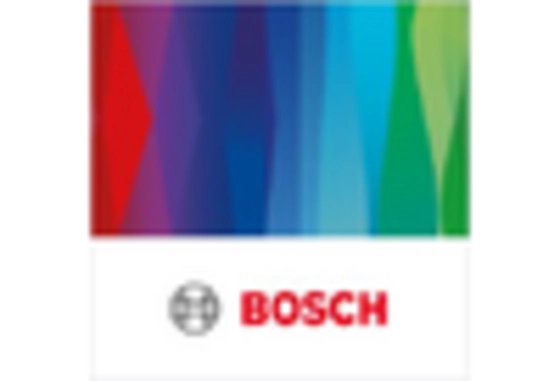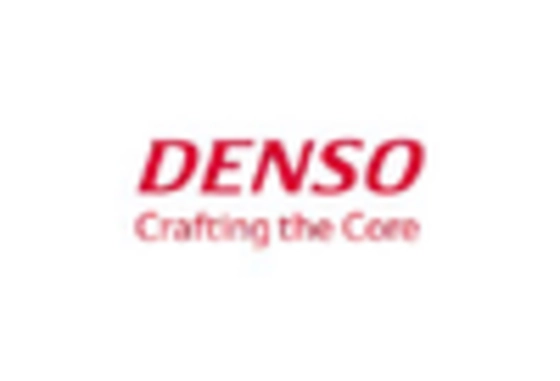Regulatory Standards and Compliance
Regulatory standards are increasingly influencing the Automotive Cabin Air Quality Sensor Market. Governments and regulatory bodies are implementing stricter guidelines regarding vehicle emissions and air quality, compelling manufacturers to adopt advanced sensor technologies. Compliance with these regulations not only ensures legal adherence but also enhances the marketability of vehicles. As a result, the demand for cabin air quality sensors is expected to rise, with market forecasts indicating a potential growth of 10% in sensor adoption rates as manufacturers seek to align with evolving regulations and consumer expectations.
Increased Focus on In-Car Experience
The growing emphasis on enhancing the in-car experience is a vital driver for the Automotive Cabin Air Quality Sensor Market. Consumers are increasingly seeking vehicles that offer not only performance but also comfort and well-being. This trend has led manufacturers to invest in technologies that improve air quality within the cabin. Market data suggests that the demand for vehicles equipped with advanced air quality sensors is expected to rise by 12% annually, as consumers prioritize a healthier and more enjoyable driving experience.
Rising Consumer Awareness of Air Quality
The increasing awareness among consumers regarding the impact of air quality on health is a notable driver for the Automotive Cabin Air Quality Sensor Market. As individuals become more informed about the potential health risks associated with poor air quality, they are more likely to seek vehicles equipped with advanced air quality sensors. This trend is reflected in market data, indicating a projected growth rate of approximately 8% annually in the automotive sector focused on air quality improvements. Consumers are prioritizing their health and well-being, which in turn drives manufacturers to innovate and integrate sophisticated air quality monitoring systems into their vehicles.
Shift Towards Electric and Hybrid Vehicles
The shift towards electric and hybrid vehicles is significantly impacting the Automotive Cabin Air Quality Sensor Market. As these vehicles become more prevalent, the demand for advanced air quality monitoring systems is likely to increase. Electric and hybrid vehicles often feature enhanced cabin environments, necessitating sophisticated sensors to maintain optimal air quality. Market analysis indicates that the segment for cabin air quality sensors in electric vehicles could grow by 20% over the next few years, driven by consumer preferences for sustainable and health-conscious transportation options.
Technological Advancements in Sensor Technology
Technological advancements play a crucial role in shaping the Automotive Cabin Air Quality Sensor Market. Innovations in sensor technology, such as the development of more sensitive and accurate sensors, are enhancing the ability to detect a wider range of pollutants. This evolution is likely to lead to increased adoption rates among automotive manufacturers, as they strive to meet consumer demands for cleaner air within vehicles. Market data suggests that the integration of these advanced sensors could lead to a 15% increase in market penetration over the next five years, as manufacturers recognize the competitive advantage of offering superior air quality solutions.

















Leave a Comment